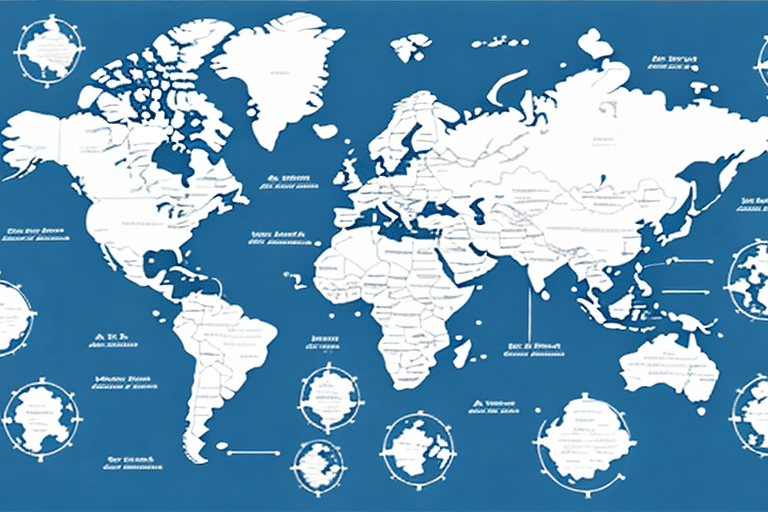Introduction to UPS Worldship Rates
For business owners who regularly handle shipping, understanding UPS Worldship rates is crucial. UPS Worldship is a comprehensive shipping solution that integrates seamlessly with your business operations, offering a range of services tailored to meet diverse shipping needs. This article provides an in-depth analysis of UPS Worldship rates, including how they are calculated, the factors that influence them, the different rate types available, and strategies to optimize your shipping expenses.
How UPS Worldship Rates are Calculated
UPS Worldship rates are determined using a sophisticated algorithm that considers multiple variables to provide accurate pricing for your shipments. The primary factors include:
- Package Weight and Dimensions: Heavier and larger packages typically incur higher rates. UPS uses dimensional weight pricing to account for the size of the package relative to its actual weight.
- Destination: Shipping costs vary based on the distance and the specific locations involved, whether domestic or international.
- Shipping Speed: Faster delivery options, such as next-day or two-day shipping, are more expensive than standard ground services.
- Additional Services: Services like insurance, signature confirmation, and special handling add to the overall cost.
- Package Type: Different package types (e.g., envelopes, boxes, tubes) may have varying rates.
Additionally, UPS frequently updates their rate structures to reflect changes in fuel costs, market conditions, and operational expenses. For the most accurate and up-to-date information, consulting the official UPS Rate Calculator is recommended.
Factors Influencing UPS Worldship Rates
Several key factors can significantly impact the rates you pay for UPS Worldship services:
1. Shipment Volume and Frequency
Businesses that ship large volumes frequently may qualify for discounted rates. UPS offers volume pricing tiers that can reduce the cost per package as your shipping volume increases.
2. Package Characteristics
The weight, dimensions, and type of packaging all play a role in determining shipping costs. Optimizing package sizes and weights can lead to substantial savings.
3. Destination and Delivery Area
Shipping to remote or international destinations often results in higher rates due to increased transportation costs and potential customs fees.
4. Seasonal Demand
During peak seasons, such as holidays, shipping rates may fluctuate based on demand and capacity constraints.
5. Fuel Surcharges and Additional Fees
UPS applies fuel surcharges and other fees that can vary over time. Staying informed about these can help in budgeting and cost management.
Comparing UPS Worldship Rates with Other Shipping Options
When selecting a shipping carrier, it's essential to compare UPS Worldship rates with those of other major carriers to ensure you're getting the best value for your business needs.
- USPS: Generally offers lower rates for lighter packages and provides free shipping supplies, making it a cost-effective option for small businesses.
- FedEx: Known for faster delivery options and reliable international shipping services, FedEx may be preferable for time-sensitive shipments.
- DHL: Excels in international shipping, especially in regions where DHL has a strong presence, but can be more expensive for domestic shipments.
According to a 2023 Statista report, UPS remains one of the top shipping providers globally, offering competitive rates and a broad range of services that cater to diverse business needs.
Strategies to Optimize UPS Worldship Rates
Implementing effective strategies can help your business minimize shipping costs while maintaining high service levels:
1. Leverage Volume Discounts
Negotiate with UPS for volume-based discounts if your shipping volume warrants it. This can lead to significant savings over time.
2. Optimize Packaging
Use appropriately sized packaging to reduce dimensional weight charges. Custom packaging solutions can also enhance protection and reduce damage rates.
3. Choose the Right Shipping Speed
Assess your delivery requirements and select the most cost-effective shipping speed that meets your customers' expectations.
4. Utilize Third-Party Shipping Software
Integrate UPS Worldship with third-party shipping software to streamline operations, access better rates, and gain valuable shipping insights.
5. Regularly Review Shipping Practices
Conduct periodic audits of your shipping processes to identify areas for improvement and cost-saving opportunities.
Common Pitfalls in UPS Worldship Rate Calculations
Avoiding common mistakes can help ensure accurate rate calculations and prevent unexpected expenses:
- Incorrect Weight and Dimension Measurements: Always measure and weigh packages accurately to avoid additional fees.
- Ignoring Additional Fees: Be aware of extra charges like fuel surcharges, residential delivery fees, and special handling costs.
- Underutilizing Discounts: Take advantage of all available discounts and promotions offered by UPS.
- Inadequate Packaging: Poor packaging can lead to damage, requiring additional services and increasing costs.
Pros and Cons of Using UPS Worldship
Understanding the advantages and drawbacks of UPS Worldship can help you make an informed decision for your business:
Pros
- Comprehensive Service Options: UPS offers a wide range of shipping services, including ground, air, and international shipping.
- Reliable Delivery: Known for punctual and dependable delivery services, UPS provides tracking and insurance options for added security.
- Integration Capabilities: UPS Worldship integrates seamlessly with various business systems, enhancing operational efficiency.
- Global Reach: Extensive international network facilitates global shipping with ease.
Cons
- Higher Costs for Certain Services: Premium services and expedited shipping options can be more expensive compared to other carriers.
- Complex Rate Structures: The multitude of factors influencing rates can make pricing seem complicated and difficult to predict.
- Additional Fees: Extra charges for services like residential delivery and special handling can increase overall shipping costs.
Conclusion
Grasping the intricacies of UPS Worldship rates is essential for any business that depends on shipping. By understanding how rates are calculated, the factors that influence them, and the strategies to optimize costs, you can enhance your shipping efficiency and profitability. Regularly reviewing your shipping practices and staying informed about UPS's rate structures and discounts will ensure that your business remains competitive in a dynamic market.




















